On the Monks of Tibhirne (in French). “Sept frères pour l’éternité – Les moines de Tibhirine” was produced by Net for God who are part of the ecclesial movement, Chemin Neuf Community.
It is well done and informative.
On the Monks of Tibhirne (in French). “Sept frères pour l’éternité – Les moines de Tibhirine” was produced by Net for God who are part of the ecclesial movement, Chemin Neuf Community.
It is well done and informative.
Today in 1915 Prades, France, Thomas Merton was born. The famous monk of the Cistercian Order of the Strict Observance (the Trappists), was known in his monastery as Father Louis. The Merton genealogy includes an American mother and a father from New Zealand. Artists, both died early; Merton’s mother died of stomach cancer when he was six years old; 10 years later, his father died of a brain tumor. His early life was wild and seemingly of out of control.
Having met the Lord, Thomas Merton converted to Catholicism in 1938, while he was a student at Columbia University, at Corpus Christi Church on 121st, NYC. Perceiving a call to the contemplative life after the Franciscans rejected him, he entered the Trappist Abbey in Kentucky; Thomas initially gave up his writing career yet it was Abbot Frederic Dunne who recognized his talent noting that it was helpful in bringing others to Christ, he missioned Merton to write.
Thomas Merton once wrote: My Lord God, I have no idea where I am going. I do not see the road ahead of me. I cannot know for certain where it will end. Nor do I really know myself, and the fact that I think I am following your will does not mean that I am actually doing so. But I believe that the desire to please you does in fact please you. And I hope I have that desire in all that I am doing. I hope that I will never do anything apart from that desire. And I know that if I do this you will lead me by the right road, though I may know nothing about it. Therefore I will trust you always though I may seem to be lost and in the shadow of death. I will not fear, for you are ever with me, and you will never leave me to face my perils alone.
Thomas Merton
Thoughts in Solitude, p. 83
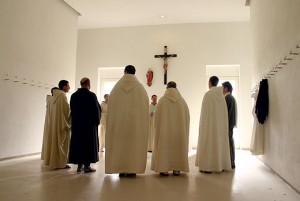 In this octave of the Ascension, and just before the great solemn feast of Pentecost, I thought I might share with you a 2005 video of the building of the Monastery of Novy Dvur (Czech Republic). To me, this community of Trappist monks is another great example of faith in action, of seeing the human person in action so that God may be glorified.
In this octave of the Ascension, and just before the great solemn feast of Pentecost, I thought I might share with you a 2005 video of the building of the Monastery of Novy Dvur (Czech Republic). To me, this community of Trappist monks is another great example of faith in action, of seeing the human person in action so that God may be glorified.
“Space of Silence” is a stunning story of faith, vulnerability and humanity; it is so because you can see a concrete expression of grace at work in this local Church.
The documentary shows the slow rebirth of a monastic presence in lands dominated by the Communist ideology; this is the first monastery built in the Eastern lands where the atheistic ideology ruled.
The Novy Dvur is a growing, international Strict Cistercian observance monastery founded with the assistance of the French abbey of Sept Fons. Since 2012, the Trappist community was given the title of “abbey” thus their official name is the Abbey of Our Lady of Nový Dvůr.
More on the Trappists at Novy Dvur Monastery (this website gives a lot more info to consider).
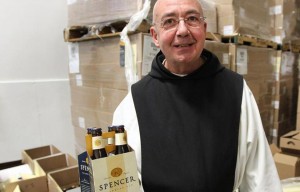 Trappist Brother Isaac shows some bottles of Spencer Trappist Ale. This is the latest venture of the Cistercian monks in Spencer, MA. They’re hoping to sell 4000 barrels (1.3 million bottles) of their beer.
Trappist Brother Isaac shows some bottles of Spencer Trappist Ale. This is the latest venture of the Cistercian monks in Spencer, MA. They’re hoping to sell 4000 barrels (1.3 million bottles) of their beer.
The Boston Globe has a story here. Pray that the State of CT will allow the beer to be sold in CT soon.
All Cistercian saints and blesseds, pray for the monks, and for us.
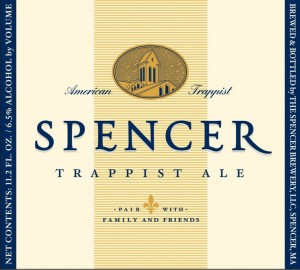 The Trappist monks of St. Joseph’s Abbey (Spencer, MA) have rolled out their product: Spencer Trappist Ale.
The Trappist monks of St. Joseph’s Abbey (Spencer, MA) have rolled out their product: Spencer Trappist Ale.
The Rule of Benedict tells the monks and nuns that they have an industry to bring in an income and the Cistercian charism is to attend to manual labor in a more concerted way (even though Benedictine monks ought also be so attentive). For years they have been making Trappist Preserves and designing vestments for the sacred Liturgy through their business the Holy Rood Guild. Time has come for a new venture given the human and economic ecology: the monks have found that they need to reasses their ways of making money given their the available monks. So many of them are old now and not many new recruits.
You can “Like” the Facebook page.
The Trappists are joining other US Benedictines who are making beer like the Abbey of Christ in the Desert (New Mexico).
In daily life most of occasionally remember the passing of a loved with a visit to the cemetery, saying a prayer for the peaceful repose of the soul, perhaps having a Mass offered for the loved. These are normal Catholic practices in remembering the dead. But when you are a pope similar things happen, but just like with loved ones, there comes a point that we just don’t actively remember anymore. Do we actively remember the dead? In my family, I think I am the only one to keep the memory of loved ones known, and try to beg God for mercy on the dead. This is a sad stage in our the evolving of our society.
Today happens to be anniversary of death that I am recalling, four people from widely different backgrounds and vocations:
The mostly Italian group of Trappistine nuns forming a monastic colony in Syria are not moving, even in the face of violence.
Since 2005, Mother Marta Luisa Fagnani and the other nuns have committed themselves to prayer and work in a country in crisis. Their witness at the Monastery of Blessed Mary of Font of Peace (in Arabic, Dier al Adrha Yanbu’a-s-Salam), is a foundation of the Valserena Monastery in Guardistallo, Italy.
They write a blog, Ora pro Siria, in Italian and not frequently updated, but you can get a sense of their witness there. BUT, the monastic project of the nuns is explained here, which also asks the reader to help with prayer, friendship and money.
Yesterday, the daily Il Sussidiario published an English translation of an interview with one of the nuns.
Two years ago today, Traces magazine published a story, “The Sisters of Syria,” where the nuns talk about their call to make a monastic foundation in Syria, what freedom, the Encounter with the Lord and others and silence means. Few know, for example, that the Middle East had 11 monasteries of the Order of Cistercians of the Strict Observance (the Trappists) but dissolved due to the Islamic invasion. This is something to think and pray about. Do you have the same commitment to the Lord and to missionary zeal as these nuns?
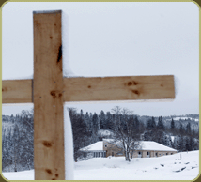 The Cistercians of the Strict Observance –the Trappists– are busy reviving monastic life in Norway after an absence since a fire destroyed the ancient monastery. Monks and nuns are taking up with great seriousness the invitation of the Pope Benedict XVI to share the spiritual, intellectual and cultural traditions of the monastic Rule in places where the need is great even new: to bring a light to darkness. Cistercian monks and nuns, hence, are founding separate monasteries bringing with them observances of the traditional vows of stability, conversion of manners, and obedience to a part of the world that’s been basically secularized for a long time even though the Norwegian Lutheran Church is the “state church.” In 2009, monks of Munkeby Priory are the first foundation of the great Cistercian house of Cîteaux since the 15th century, and in 2000 the American nuns arrived. Cistercians first came to Norway in the 12th century.
The Cistercians of the Strict Observance –the Trappists– are busy reviving monastic life in Norway after an absence since a fire destroyed the ancient monastery. Monks and nuns are taking up with great seriousness the invitation of the Pope Benedict XVI to share the spiritual, intellectual and cultural traditions of the monastic Rule in places where the need is great even new: to bring a light to darkness. Cistercian monks and nuns, hence, are founding separate monasteries bringing with them observances of the traditional vows of stability, conversion of manners, and obedience to a part of the world that’s been basically secularized for a long time even though the Norwegian Lutheran Church is the “state church.” In 2009, monks of Munkeby Priory are the first foundation of the great Cistercian house of Cîteaux since the 15th century, and in 2000 the American nuns arrived. Cistercians first came to Norway in the 12th century.
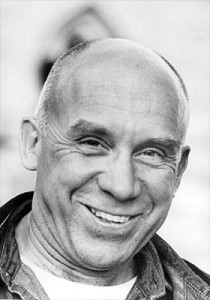 Hear with favor our prayers, which we humbly offer, O Lord, for the salvation of the soul of Father Louis (Thomas Merton), your servant and Priest, that he, who devoted a faithful ministry to your name, may rejoice in the perpetual company of your Saints.
Hear with favor our prayers, which we humbly offer, O Lord, for the salvation of the soul of Father Louis (Thomas Merton), your servant and Priest, that he, who devoted a faithful ministry to your name, may rejoice in the perpetual company of your Saints.
The famous Trappist monk, Thomas Merton (b. 1915) died on this date in 1968.
In very many ways Merton was a consummate human being: loved pleasure and engaged his freedom only to transform pleasure and his version of freedom with his embrace a life of prayer and silence as a Strict Observance Cistercian (a Trappist monk) in a Kentucky abbey. In the monastery Thomas Merton was known as Father M. Louis, a name I still prefer to use because of his commitment to the monastic life. At the command of his abbot, Merton wrote of his conversion in his 1949 best seller, The Seven Storey Mountain, introducing millions of people to the monastic life. No other book since this one has had such a critical impact on Catholics. His conversion story was only one of many books and essays published by Merton and even in death Merton continues to publish due to the finding of new materials or the repackaging of thought into new books. The irony of Merton’s life as a monk is that he died in Asia conferencing with an international and interfaith group of monks and nuns. His body was brought home in a steel casket on a military transport.
In his lifetime Merton was a voice of reason, a voice of sanity, a voice speaking the Word of God. As typical of public thinkers he became a voice and an influence for a variety of types of people, from artists, intellectuals, religious types, peace and nonviolence promoters and the like.
Key for me and dare I say for Benedictines of all stripes, Merton argued for a contemplative life which engages the reality of the world so that the monk, nun, oblate could intercede on behalf of the world for others (read The Sign of Jonas). Father Louis helps me to understand the Benedictine charism better when he says,
The Benedictine life is simply living the Gospel without fanfare…. The mainspring of everything in Saint Benedict is the love of Christ in Himself, in the poor, in the monastic community, in the individual brethren…. This is the key to the monastic life and spirit.
A life totally cut of is good for a few, like the Carthusians, but for Benedictines and the Cistercians (a reformed group of Benedictines) who form a school of prayer and love in Christ, nothing is out-of-bounds. Merton, indeed, opened the doors to a new manner of living the vitally important monastic life today.
He sought to be a saint, that is, be yourself, is the vocation that all of us ought to consider doing with seriousness. The Pope echoes this notion, so does Communion and Liberation. Great minds think alike.
Watch Father Jim Martin’s video presentation on Thomas Merton.
Thomas Merton’s work continues with the initiative of The Merton Institute for Contemplative Living.
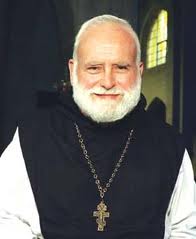 Today marks the 7th anniversary of death of M. Basil Pennington, OCSO, monk, priest, abbot, writer. In 2005 he died on the feast of the Sacred Heart.
Today marks the 7th anniversary of death of M. Basil Pennington, OCSO, monk, priest, abbot, writer. In 2005 he died on the feast of the Sacred Heart.